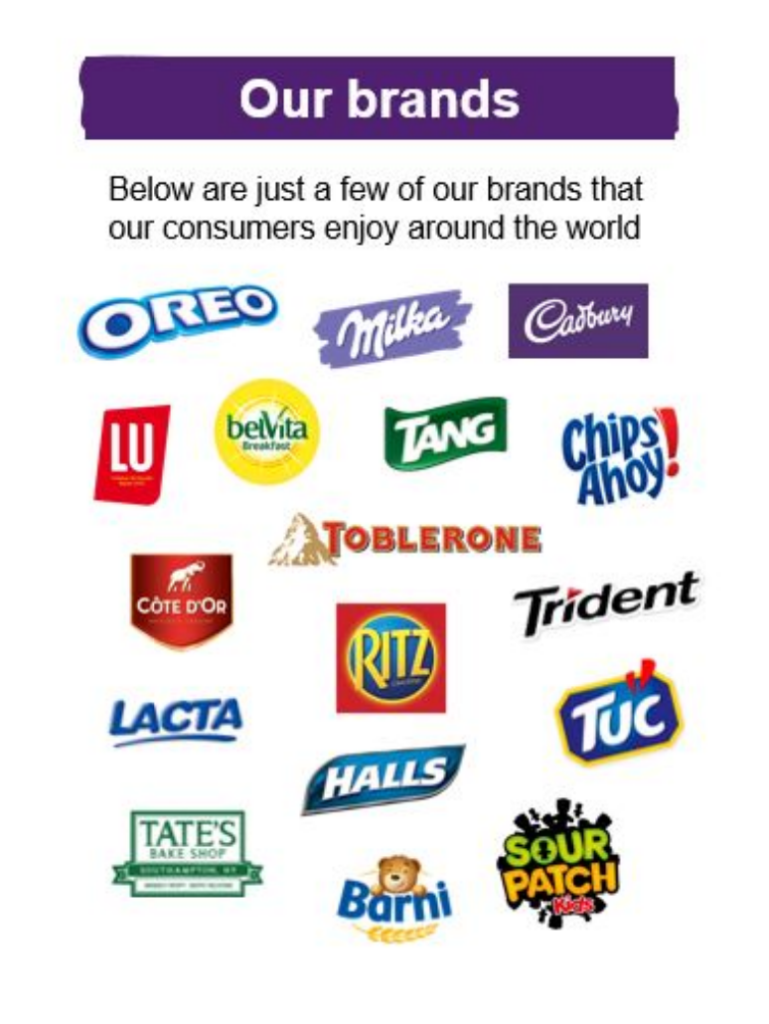Candy Industry Boom! $86 Billion Market By 2030? Find Out More
Ever wonder where the sweet treats we indulge in are headed in terms of popularity and market value? The global candy industry is not just a source of sugary delights; it's a burgeoning economic force, poised for significant expansion in the coming years. According to a recent analysis by Mordor Intelligence, the industry is projected to surge by $71.84 billion USD by 2025, ultimately reaching a staggering market value of $86.65 billion USD by 2030, exhibiting a Compound Annual Growth Rate (CAGR) of 3.82%.
This substantial growth isn't happening in a vacuum. Several factors are contributing to this sweet surge, including shifting consumer preferences, innovative product development, and strategic marketing initiatives. Major players in the confectionery world are keenly aware of these dynamics and are actively adapting to maintain their competitive edge. This involves everything from reformulating products to meet health-conscious demands to embracing seasonal trends with novel and enticing offerings.
Company Name Mordor Intelligence Industry Market Research and Consulting Founded 2014 Headquarters Hyderabad, India Key People Pramod Kumar (CEO) Specialization Providing market analysis reports, consulting services, and custom research. Focus Areas Coverage spans various industries including food and beverages, healthcare, technology, and more. Website Mordor IntelligenceLeading chocolate and candy manufacturers in America have already committed to providing consumers with comprehensive information about their products. This includes clear labeling and portion control options. A significant pledge from these companies involves ensuring that half of their individually wrapped products contain 200 calories or less per pack. Moreover, they aim to have calorie information prominently displayed on the front of 90% of their products. This move reflects a growing awareness of health and wellness trends and a proactive approach to responsible marketing.
- Movie Mania Telugu Films Movierulz Streaming In 20242025
- Alana Cho From Twitch Star To Onlyfans Controversy Leaks
Seasonal sweets play a vital role in driving sales for many top candy brands. These companies are constantly innovating to capture the spirit of various holidays, introducing flavors and shapes that resonate with consumers' festive moods. Iconic examples include chocolate hearts for Valentines Day, marshmallow Peeps for Easter, and an array of themed candies during Halloween. This practice demonstrates the industry's ability to tap into cultural traditions and create products that are both timely and appealing.
Perfetti Van Melle, a global confectionery giant, exemplifies the power of strategic mergers. The company was formed in 2001 through the union of Italian candy company Perfetti and Dutch candy company Van Melle. This merger allowed both companies to expand their product portfolios, leverage their combined resources, and strengthen their presence in the global market. It's a testament to how strategic alliances can lead to significant growth and market dominance.
The festive season is a particularly critical period for the chocolate industry. Brands are increasingly focused on innovating to meet the surging demand for premium, indulgent, and personalized gifting options. This includes developing unique flavor combinations, creating visually appealing packaging, and offering customizable products that cater to individual preferences. The goal is to provide consumers with memorable and shareable experiences that enhance the joy of the holiday season.
- Vegamovies Adult Content What You Need To Know 2024
- Movierulz 2025 Watch Telugu Movies Online Free Guide Review
Toblerone, known for its distinctive triangular shape, has introduced its luxurious offerings to capture a larger share of the premium chocolate market. This highlights the ongoing effort by established brands to innovate and cater to consumers seeking high-end confectionery experiences. Such moves often involve sourcing premium ingredients, employing artisanal production techniques, and crafting sophisticated flavor profiles.
The confectionery landscape is constantly evolving, and several companies are poised to lead the way in the coming years. Identifying the top 5 candy factories in 2025 involves analyzing their innovative approaches, market performance, and overall impact on the industry. These leaders are expected to drive trends in flavor, packaging, and distribution, shaping the future of the global confectionery market.
Ferrara Candy Company, a leading sugar confections company in the U.S., is further embracing the festive spirit by launching its holiday candy salad kit. This innovative product offers consumers a convenient and engaging way to celebrate the season, providing a mix of candies that can be used for various festive activities. It's an example of how companies are responding to consumer demand for variety, convenience, and interactive experiences.
While the candy industry enjoys robust growth, it's important to consider its position within the broader economic context. For instance, global sales of the top performance apparel, accessories, and footwear companies in 2023 provide a benchmark for understanding consumer spending habits and market trends across different sectors. Similarly, the value of the secondhand apparel market worldwide from 2021 to 2028 offers insights into the growing importance of sustainability and conscious consumerism, factors that may also influence purchasing decisions in the confectionery market.
The chocolate segment, in particular, holds a special allure for consumers worldwide. Unveiling the success stories of the top 10 chocolate companies in 2024 reveals the innovation, craftsmanship, and global impact that define these industry leaders. These companies have not only mastered the art of crafting delicious chocolates but have also built strong brand reputations and established extensive distribution networks. Their success underscores the enduring appeal of chocolate as a beloved treat and a symbol of indulgence.
The Hershey Company, for example, stands out as a dominant player in the U.S. chocolate market. In 2022, the company held approximately 35.5% of the total market share, solidifying its position as the leading chocolate manufacturer in the United States. Its main competitor, Mars, trails behind, highlighting Hershey's strong brand recognition, extensive product portfolio, and effective marketing strategies.
The candy and chocolate manufacturing industry is a significant employer, providing livelihoods for hundreds of thousands of people around the globe. An estimated 13,600 businesses are currently active within the global candy and chocolate manufacturing industry, collectively employing over 450,000 individuals. These figures underscore the industry's substantial economic impact and its role in supporting communities worldwide.
These firms aren't just manufacturers; they are innovators, marketers, and community builders. Many of them are actively involved in initiatives aimed at promoting sustainable sourcing practices, supporting local communities, and reducing their environmental footprint. This reflects a growing awareness of the importance of corporate social responsibility and a commitment to operating in a sustainable and ethical manner.
Many companies manufacture a diverse range of products beyond traditional chocolates and candies. This includes rich, exotic, and quality chocolates, along with syrups, spreads, cocoa powder, and sweet beverages. This diversification allows companies to cater to a wider range of consumer preferences and expand their market reach.
A robust brand portfolio is often a key indicator of a company's strength and market position. Many leading confectionery companies boast an extensive collection of brands, each targeting different consumer segments and occasions. Some companies have more than 80 brands under their umbrella, showcasing their ability to innovate and adapt to changing market dynamics.
Candy Industry magazine publishes an annual list of the top 100 global confectionery companies, ranking them by net sales. This list provides a valuable overview of the competitive landscape and highlights the key players shaping the industry. Analyzing this list can reveal trends in market share, growth rates, and product innovation.
An extract from this list, showcasing the top ten global confectionery companies that manufacture some form of chocolate, provides a snapshot of the industry's leading players. The ranking is based on net confectionery sales value in 2020, offering insights into the relative performance of these companies during a specific period. This data can be used to benchmark performance, identify opportunities for growth, and understand the competitive dynamics of the market.
Pecan Deluxe Candy Company, for example, has a history rooted in innovation and a strong commitment to customer relationships. The company prides itself on fostering partnerships and treating customers like family, demonstrating the importance of building strong and lasting relationships in the confectionery industry.
Leading global confectionery companies also invest heavily in understanding consumer behavior and preferences. Analyzing the dollars spent per buyer on seasonal candy in the U.S. provides valuable insights into purchasing patterns and the impact of seasonal promotions. This data helps companies to optimize their product offerings, pricing strategies, and marketing campaigns.
Specialty and wellness products are experiencing significant growth, reflecting the broader trend towards health-conscious consumerism. This segment includes products that cater to specific dietary needs, such as sugar-free, gluten-free, and organic options. Companies that can successfully tap into this growing market segment are likely to see significant growth in the coming years.
Popular categories within the candy industry include gummies, hard candies, and lollipops. This segment accounts for a significant share of the market, driven by factors such as affordability, convenience, and a wide range of flavor options. These products are often targeted towards children and young adults, making them a key segment for companies looking to build brand loyalty.
The future of seasonal candy sales is projected to be a dominant element of the chocolate industry, driven by continuous innovations. This includes the development of new flavors, formats, and packaging designs, as well as the use of digital marketing and social media to engage with consumers. Companies that can successfully leverage these trends are likely to see sustained growth in their seasonal candy sales.
Snickers, with its classic mix of nougat, caramel, peanuts, and chocolate, continues to lead the candy bar pack, generating $457 million in sales. This highlights the enduring appeal of classic candy bars and the importance of maintaining brand consistency and quality. Despite the emergence of new and innovative products, these tried-and-true favorites continue to resonate with consumers.
The Japan chocolate market presents a significant growth opportunity for confectionery companies. It is expected to reach USD 5.73 billion in 2025 and grow at a CAGR of 2.56% to reach USD 6.50 billion by 2030. Lotte Corporation, Meiji Holdings Company Ltd, Nestl SA, and Yildiz Holding A.S. are among the major companies operating in this market, indicating its competitive nature and potential for expansion.
Seasonal product lineups are a critical component of the candy industry's success. Kit Kat Milk Chocolate Santas and Reese's Peanut Butter Cups Sugar Cookie are leading examples of seasonal offerings that drive sales and create excitement among consumers. These limited-edition products capitalize on the festive spirit and offer consumers a unique and enjoyable treat.
In conclusion, the candy market is poised for significant growth in the coming years, driven by factors such as shifting consumer preferences, innovative product development, and strategic marketing initiatives. The Hershey Company, Nestle SA, Perfetti Van Melle Group B.V., Mondelez International, Inc., and Mars, Incorporated are among the major companies operating in this market, and their continued success will depend on their ability to adapt to changing market dynamics and meet the evolving needs of consumers.
- Telugu Movies Online Watch Hd Reviews More 20242025
- Kannada Movies 2023 Watch Online Download Movierulz Alternatives

Christmas chocolate supply is safe, says Nestle

10 Largest Candy Companies in the World by Revenue (2021) Axiom Alpha

SNAX Sational Brands debuts holiday Candy Pop, Cookie Pop flavors